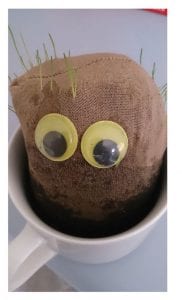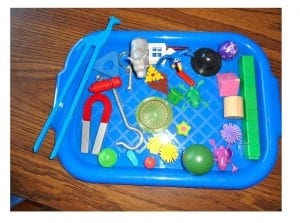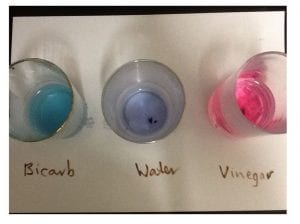Children are naturally curious about the world around them. They want to how and why and when and where? Science teacher and mum, Elizabeth Saunders of Prince of Peace Lutheran College in Everton Park has given us 3 simple science experiments to try at home:
Grow grow grow
 What to do
What to do
Fill an old stocking foot with two tablespoons of grass seeds (from the hardware store). Fill it with 1 – 2 cups of soil or potting mix and tie off. Decorate face with googly eyes and other craft materials. Put in a cup with water in the bottom and leave in a sunny spot.
What else?
How does grass grow? Why do we need to put it in a sunny place? Why do we need to water it every day? What happens if we leave in a dark cupboard? What else do plants need to grow? Why don’t plants need food? What is chlorophyll?
Float or sink?
 What to do
What to do
Get a selection of items that can get wet such as kitchen utensils, piece of foam, bath toys, balls, pencils, toy car, plastic container, ceramic mug, ruler, clothes peg or anything else
In a bucket of water or the bath tub, see what will float and what will sink.
If the item floats, what happens when you push it under the water? Does it pop back up, or does it sink down?
Objects will float if they are less dense that the water, like a piece of foam. Air is less dense than water, so if you can trap air inside an object (like a tennis ball) it will float as well. Objects that float on water have high buoyancy.
What else?
Do different types of wood have different densities – how could you test this? How do large ships float if they are made of metal which is denser than water? Is it possible for one liquid to float on another liquid (hint – what happens with cooking oil with water?)
Acid or base?
 What to do
What to do
Make some red cabbage indicator by roughly chopping a quarter of a red cabbage and covering with water in a saucepan. Heat for 10 – 15 minutes, strain the liquid into a bowl and discard the cabbage pieces. Let the purple solution cool.
RCI will change colour depending on the pH of a solution – how acidic or basic it is.
Go outside or to an area that can get wet and messy. Get a cup of water (neutral), of vinegar (acid), and of bicarb-soda mixed in water (alkali/ base). Add a spoonful of RCI to each – what happens?
Stand back and mix the vinegar and bicarb solutions together – what happens to the mixture? What colour does it go? Notice anything else?
What else?
What happens if you add more vinegar? or bicarb? or RCI? Can you get the colours to change back? What happens when you mix RCI with other substances like detergent, or lemon juice, or milk? Why does this happen?
Elizabeth Saunders is a teacher, mother, student and explorer of the scientific world. She is specialities in gifted, science and inclusive education and is passionate about social justice, empowerment, creativity and curiosity. She is confident that children are natural scientists and should be given opportunities to explore and understand their world.
Try 7 ‘sensory play’ activities with your little one by clicking here.
This article was published in Issue 4 of our print magazine, June/July 2014.





Ohhhhh… great ideas.. will try these over the school holidays. Thanks!